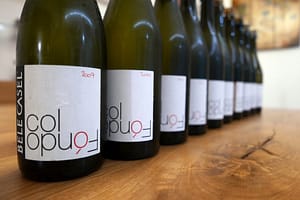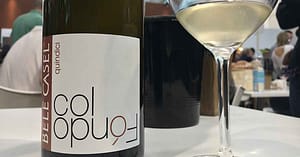Empress Livia Drusilla, wife of Augustus, attributed her longevity to drinking Prosecco.
“Glera, a banner of Venetian identity and a barrier to invaders – Part I”
By Ulderico Bernardi, professor of sociology and social process at the University of Cà Foscari in Venice (L’enologo 10, October 2014, 20-22.
Even though the revival of the celebrated wine Prosecco from the hills of Treviso province is relatively recent, the fame of this important “Mountain Wine” and symbol of Venetian exports is much more ancient. According to legend, the wine was even capable of pushing back the Austro-Hungarian and German armies after the crushing defeat of Italian forces at Caporetto along the Piave river.
European civilization and its common roots owe much to religious orders, especially when it comes to wine. It is no coincident that the title of patres vinearum (fathers of the vine) was given to monks who planted grapes throughout the continent, even in the most northern countries where the climate still allowed for vines to flourish.
At a time when the transportation of goods was anything but easy, the need to have wine on hand for holy communion aligned seamlessly with the Benedictine motto: ora et labora (pray and work). The abbeys transformed unfarmed and swamp-filled lands into fertile fields.
Monks and Abbeys
In those now distant centuries, Benedictine and Camoldolese monks planted vines on the hills around their hermitages and venerated monasteries in the Veneto. And in the foothills of the Treviso Alps, they erected abbeys in the villages of Nervesa, Vidor, Follina, Rua, and Feletto.
Still today, these places are renowned for their production of Prosecco (now made with Glera and the generous Verdiso grape that often accompanies it). The wine produced was so abundant that the abbot Carlo Lotti of the “Accademia degli anistamici nella Cividale di Belluno” called it his “debt payer.”
The rapidly growing popularity of Prosecco beyond our borders has made the wine a symbol of Italian identity. Today, throughout the world, it plays a role in rituals, celebrations, and the intimate ceremony of conviviality among friends. It is even used as a form of official celebration at institutional symposia.
Nearly Universal Appreciation
It has not been easy for this great indigenous wine from Venice, the legacy of Augustus’ Regio X Venetia et Histria, to arrive at this nearly universal appreciation among wine lovers.
Wine technicians say that the excellence of Prosecco is owed to its resistance to disease, its healthy production capacity, and to other factors as well, including the aromas and flavors it delivers on the palate. The aura associated with the name is now universal.
There is good reason for this: It is highly prized in its sparkling version and in its ancient expression as a still wine to be served in a decanter chilled with its fragrance of freshly cut grass.
In the glass it evokes the foothills of the Alps where Glera and Verdiso flourish, an area marked by its small and large waterways on the surface and below. These are all children of the Piave river which flows mightily in its bed while it secretly delivers abundant springs to the hills and valley floor. These are wholesome waters, rich with healthy salts.
It is no coincidence that Valdobbiadene, Vittorio Veneto, and Conegliano, which lies between the other two, were once towns known for their hot springs [editor’s note: There are also hot springs in Asolo]. These waters nourish the deep roots of the vineyards across a landscape that is made all the more beautiful by their presence along the slopes which bask in the sun. But it was a long road of patience and hard work that allowed men to arrive at the excellence of today.
The Secret of the Popes’ Longevity
The renowned Venetian scholar Agostino Fapanni (1778-1861), an agricultural experimenter and innovator, encouraged local grape growers to draw from the tradition of those select, coveted, and sweet wines that are produced in the smiling hills of Conegliano, Ceneda, Asolo, and Montebelluna, which, since the previous century, shipped bottles beyond the Alps and the sea to be consumed by princes and compared to the wines of France and Spain.
Fapanni attributed therapeutic properties to these wines of ours. He believed that they were endowed by with health-enhancing powers that could give popes and emperors serene health. He established a link between the ancient Pucinum [wine] that is harvested in the stone-filled hills not far from the springs of the Timavo [Timavus], believed to be the Prosecco of today.
He also made the following observation. The demand for and great fame of these wines is owed to the two following circumstances. The bishop of Ceneda, from the Turriana family, used to send them every year to the Pope Paul III, who died at 82 years of age in 1549. He also sent it to other popes. Emperor Frederick III (who died at 78 years of age in 1493) attributed these wines with having helped him to achieve serene health. And Pliny recounts that Julia Augusta [Livia Drusilla, Augustus’ wife], owed her advanced age of 82 years to these wines.






